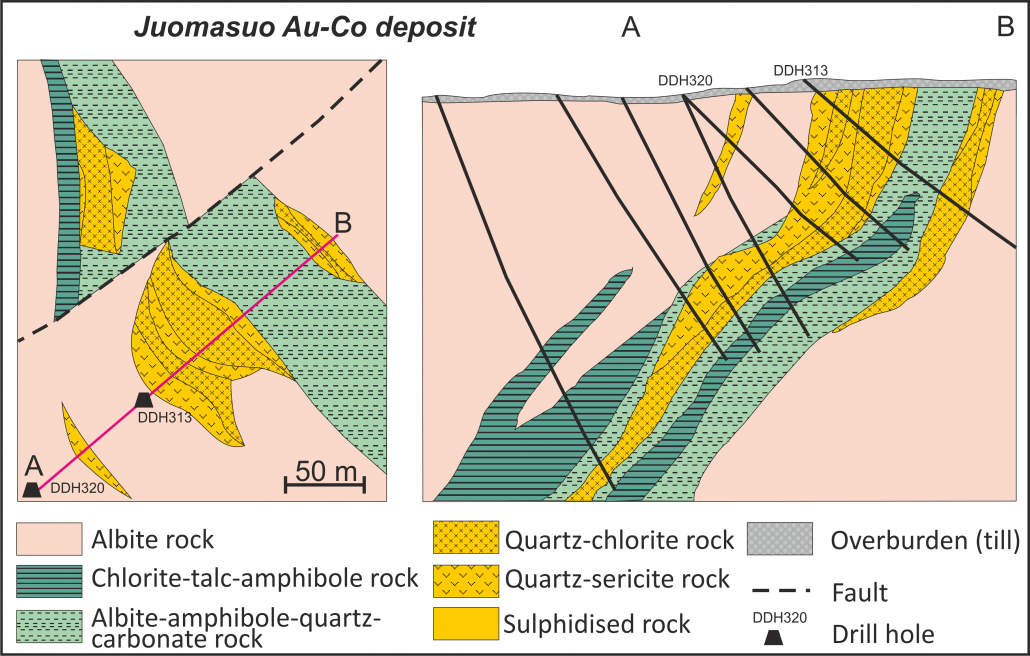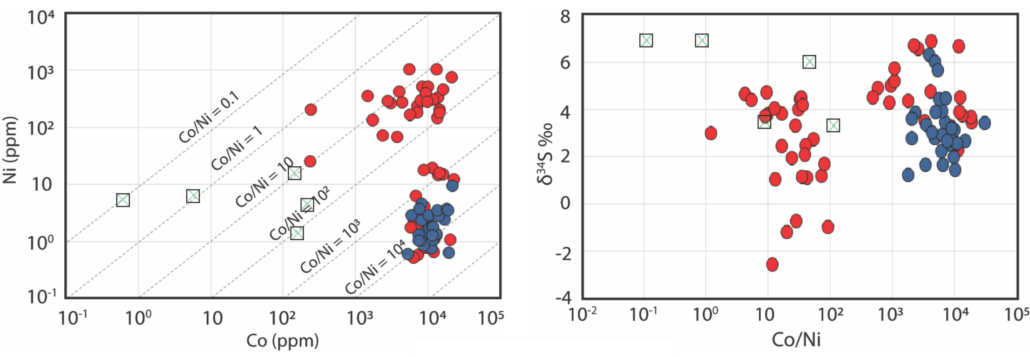The Kuusamo belt is a part of the larger Karasjok-Kuusamo-Lake Onega belt that extends from northern Norway to the Lake Onega in Russia. The rocks comprising this belt are part of the 2.5-1.9 Ga Karelian supracrustal formations. The Kuusamo belt was at least partially formed in an intracratonic failed rift setting related to the Paleoproterozoic breakup of the Archean Karelian craton and consists of several formations of volcanic and sedimentary origin, including three or four stages of mafic volcanism with associated mafic sills and dykes.
The stratigraphic sequence of the KB underwent deformation and regional metamorphism during the Svecofennian orogeny (1.9-1.8 Ga). The metamorphic grades vary from lower greenschist facies in the central parts of the belt to upper amphibolite facies in the western parts, near the contact with the Central Lapland Granitoid Complex. Higher metamorphic grades are also present in the eastern part of the belt.
The Kuusamo belt contains several epigenetic-hydrothermal gold deposits with significant enrichments of Co and other base metals. Among them, the most significant is the Juomasuo deposit, which consists of one major mineralized zone and several smaller adjacent sulphidized zones. The total mineral resource estimate for the Juomasuo deposit is 2.37 million tonnes grading at 4.6 g/t Au and 0.13 wt% Co and an additional 5.04 million tonnes of Co resources without Au grading at 0.12 wt% Co.
The host rocks of the Juomasuo deposit are characterised by strong albitisation but the mineralized zones also contain quartz, chlorite, biotite, sericite, carbonate, amphibole and talc in addition to albite. The most abundant sulphide is pyrrhotite followed by pyrite and lesser chalcopyrite. Cobaltite can be found in the Co-rich parts of the ore as inclusions in pyrrhotite and sometimes in pyrite. Cobaltian pentlandite is also present mainly as exsolutions in pyrrhotite. Molybdenite, rutile, magnetite, native Au and tellurides (altaite, tellurobismuthite and melonite) are noteworthy accessories in the deposit.
Ni and Co trace element data for pyrite which have been determined by LA ICPM-Ms analyses are significantly different in zones of Co-Au and Co-only mineralization. The Co-Au mineralization is also charecterized by larger variation of sulphur-isotope data: this probably reflects superimposition of gold enrichments on Co-mineralized zones.

Molar Element Ratios (MER: 3K/(Al+Mg+Fe-S vs. Al/(Al+Mg+Fe-S) calculated from whole rock lithogeochemical data are applicable to evaluate the vectoring capacities of alteration mineralogy. Gold and cobalt enrichments are mainly associated with sericite and chlorite(-amphibole) alteration. High grade cobalt mineralization is mostly hosted by the chloritized zones, whereas high grade gold occur in chloritic and sericitic zones.



